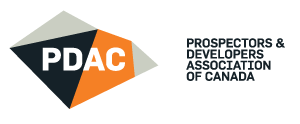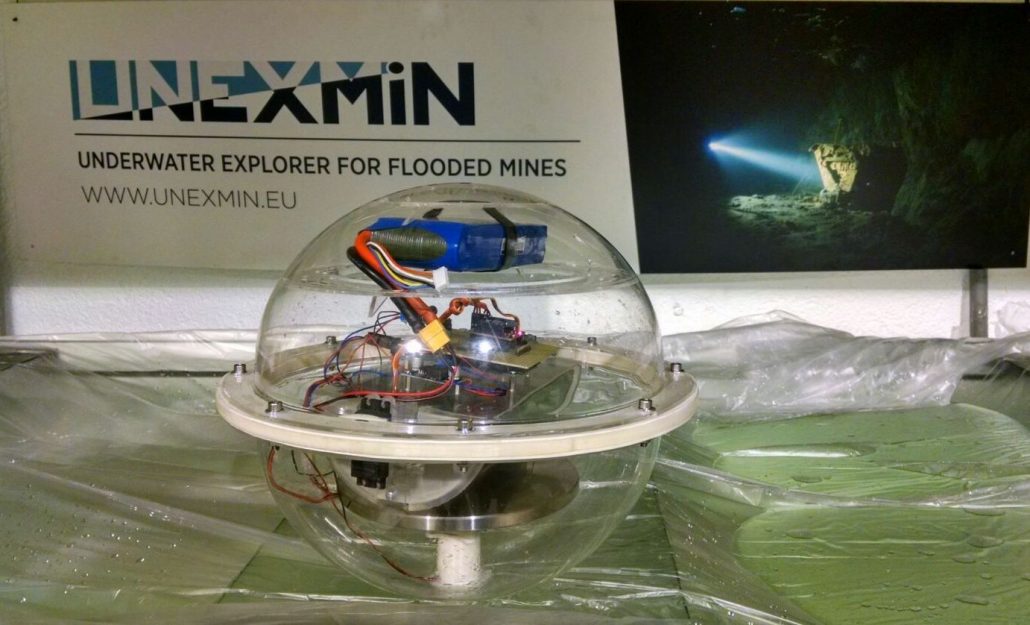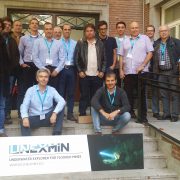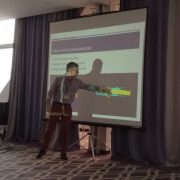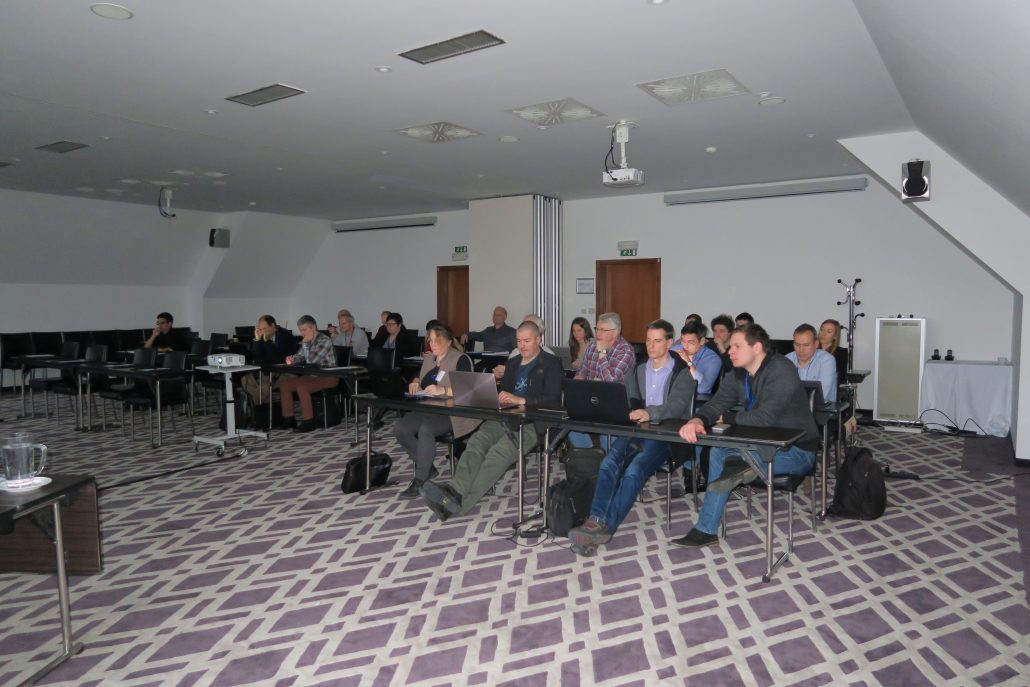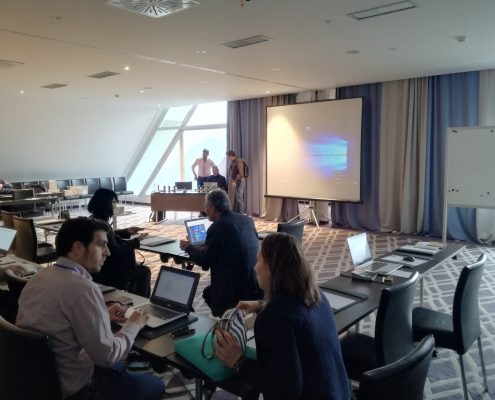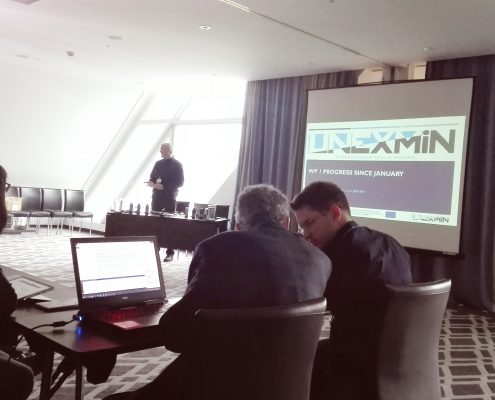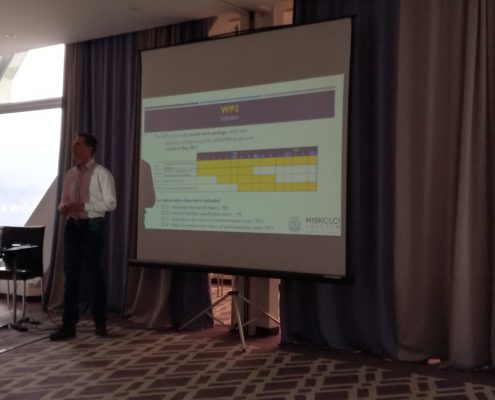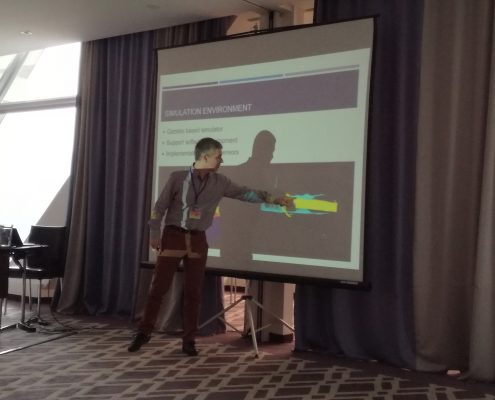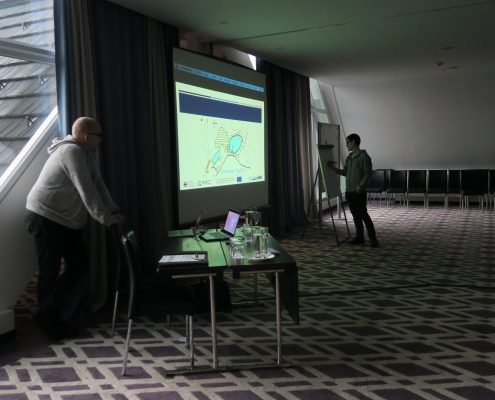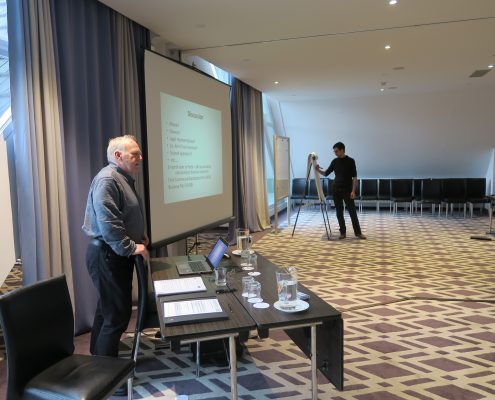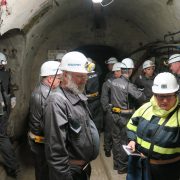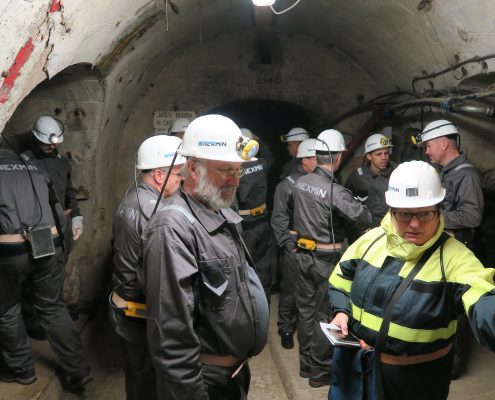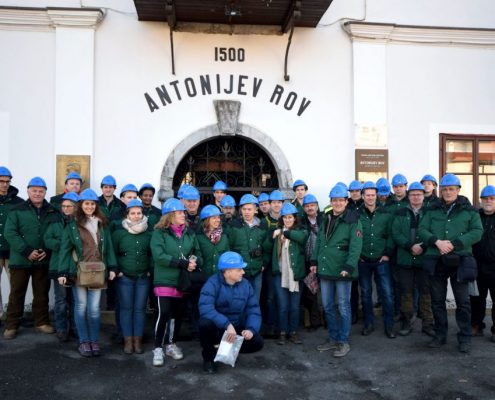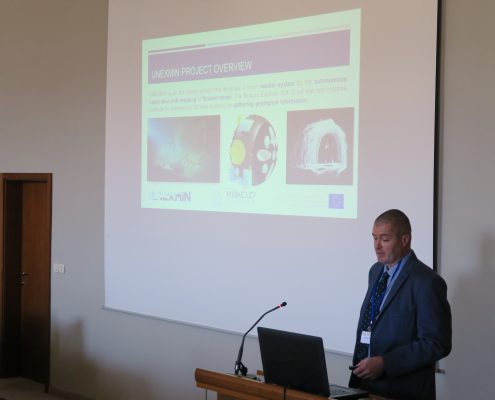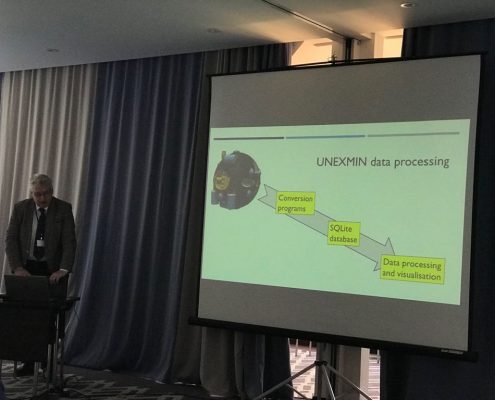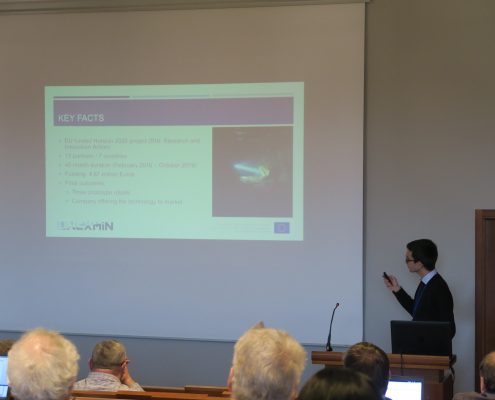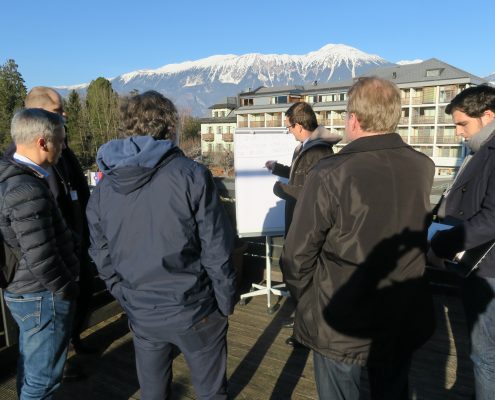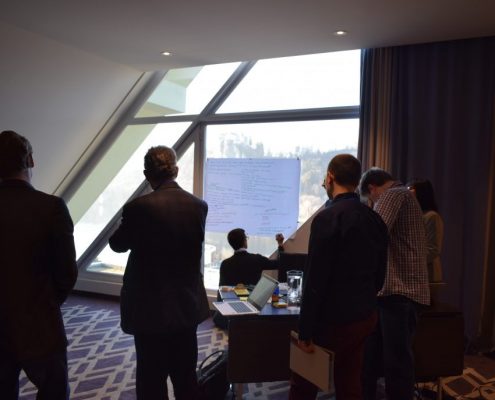The UNEXMIN project was one of the co-organizers of the conference entitled “Use of robotics and automation for mineral prospecting and extraction”, together with the ¡VAMOS! and Real-Time Mining projects – all of them funded by the Horizon 2020 framework programme. The one-day conference was held in Bled, Slovenia, on the 30th of January, 2018. It was centred in two main sessions: one dedicated to plenary talks and presentations; the other to interactive workshops. These sessions had the three projects has a major focus.
The day before the meeting, particpants were invited for a field visit to the Idrija Mercury Mine, located in the western part of Slovenia. The Idrija mine is a former mercury mine that was active for more than 500 years, mined for cinnabar and natural occurring mercury and that is now a UNESCO heritage site since 2012. A visit to the smelting plant finished the field trip. It is important to note that the Idrija will be one of the 4 test sites for the UX-1 robot. This day offered the participants the perfect introduction to Slovenia, to mining and the use of robotics – the main themes of the conference.
On the 30th morning, the conference started with the usual welcoming speeches and introdutory talks. To these, a plenary session with talks on Advances in Subsea Mining, Future Mining, Robotics in Slovenia and on the Idrija Mercury Mine followed. After the groudwork presentations the conference was divided in Hardware and Software technical talks, focussing on both the UNEXMIN and ¡VAMOS! projects developments. The first part of the conference ended with three presentations related to the three co-organizing projects. The UNEXMIN general talk closed the session, leaving a very good impression on the participants.
On the afternoon, two simultaneous workshops took place, both dedicated to the UNEXMIN and ¡VAMOS! projects. To this, the group was divided between exploitation and research roadmapping workshops. The first, centralised in the exploitation of the results coming from both projects, tried to deliver ideas to obtain further funding, the post-project exploitation strategy to follow and how to persuade costumers to buy/invest into new technologies (like UNEXMIN and ¡VAMOS!). The latter, established discussions to identify possible future research opportunities for the projects in three fields: geological data collection, spatial awareness and navigation, and extraction.
The results obtained from the exploitation and research roadmapping workshops, will surely help in the future development of the projects. Knowing how to explore the technology and how to further improve and adapt it to the future is essential.
The UNEXMIN consortium thanks for the important input given by everyone and to the Geological Survey of Slovenia for organizing this fruitful event!
